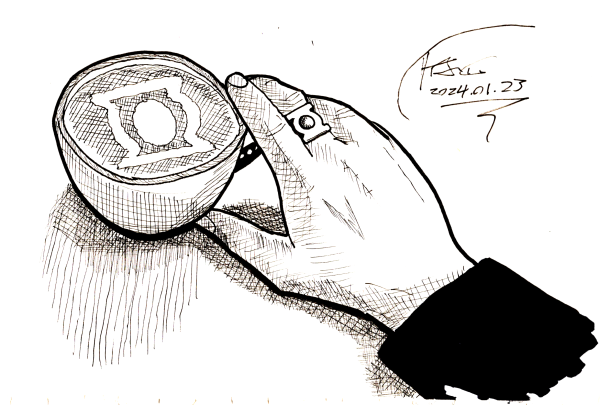
A barista noticed my Green Lantern ring, and gave me a Green Lantern mocha. :-D

-the Centaur
Words, Art & Science by Anthony Francis

A barista noticed my Green Lantern ring, and gave me a Green Lantern mocha. :-D

-the Centaur
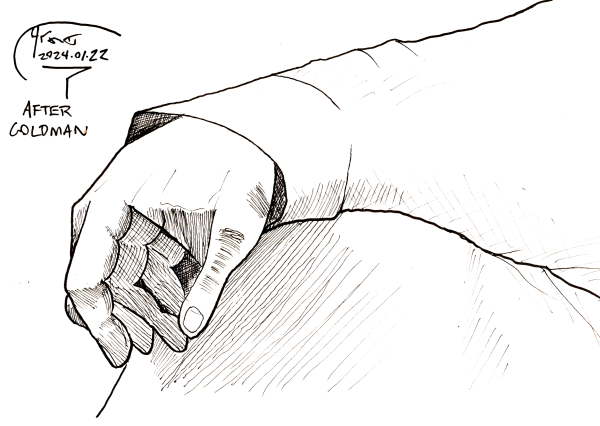
Another hand, after Goldman. I thought I was doing quite well until I tried to close the loop on the hand, and realized I'd messed up the spacing, making the hand too wide, which I partially fixed; but that in turn messed up the webbing between the hand and the finger - leading to that dark line I could not fix.
Oh well, next time. Drawing every day.
-the Centaur
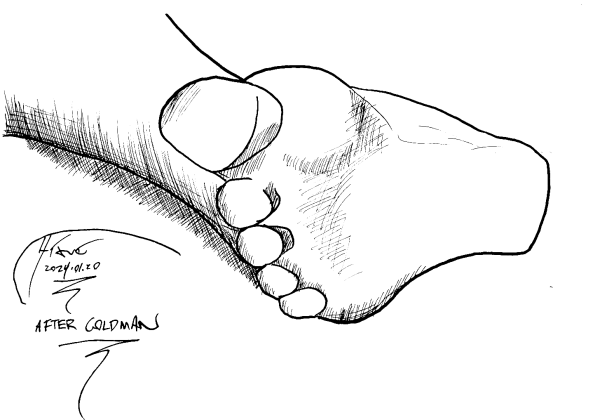
More Goldman studies. Like an AI, I kept drawing this foot with six toes, not quite sure why. Mostly fixed it, but it could have been better, if only I had learned to count.
-the Centaur
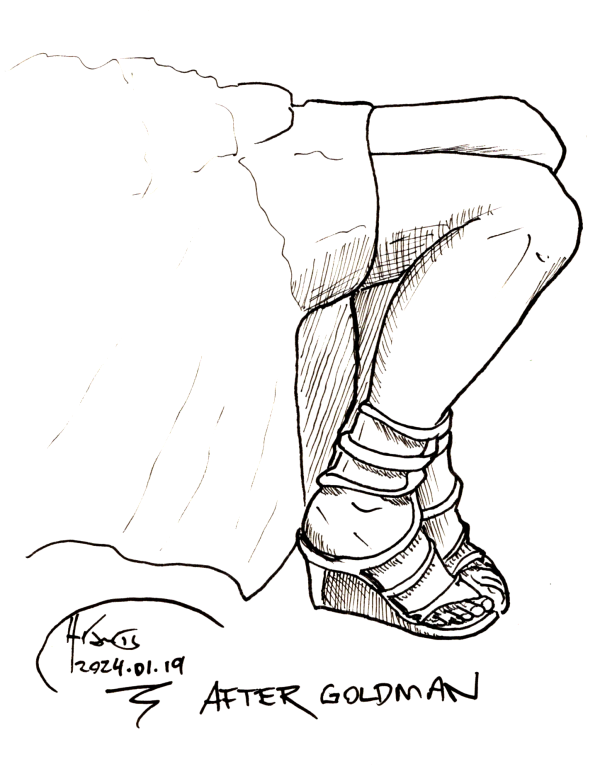
More studies from the Goldman book.
-the Centaur
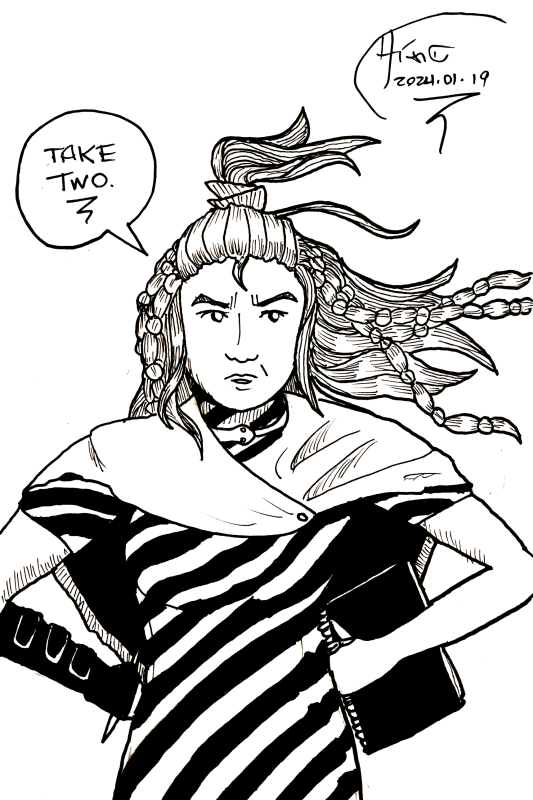
Xiao Dreamweaver from f@nu fiku again, this time drawn with a little more breathing room.
-the Centaur
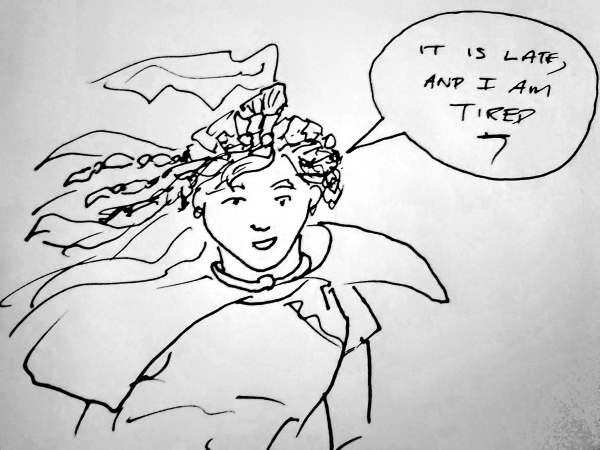
busy putting out a fire. this is what you get. ciao, xiao.
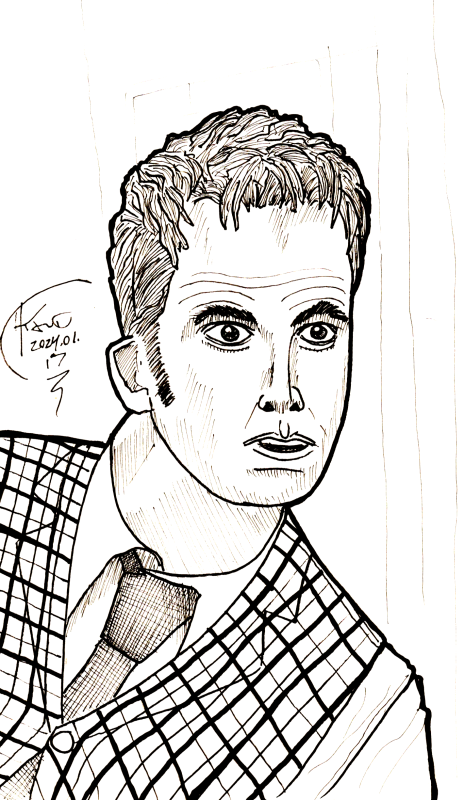
Huh. I gave myself more time, worked on the construction lines, used better pens (though, blame your tools, I could tell that the older pens produced a worse line) and overall tried to make this come out better. But I don't really like how it turned out ... something is "off" about David Tennant here, more than just my typical need to draw more, draw more, draw more, and don't waste time.

-the Centaur
Pictured: the Fourteenth Doctor.
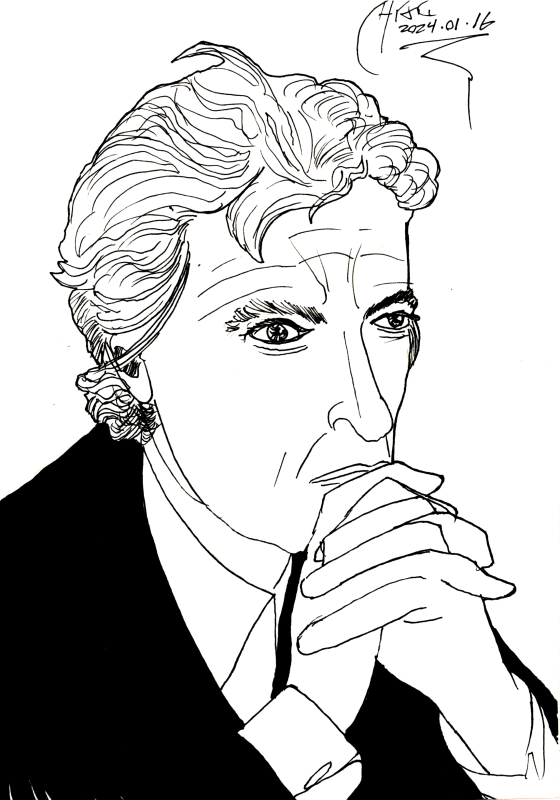
Took a little more time with this one, but still needed to start it at an earlier part of the day when I had more time. But today was really busy due to work and research, so it is what it is.
-the Centaur
Pictured, Peter Capaldi from a ScreenRant/Guardian article.

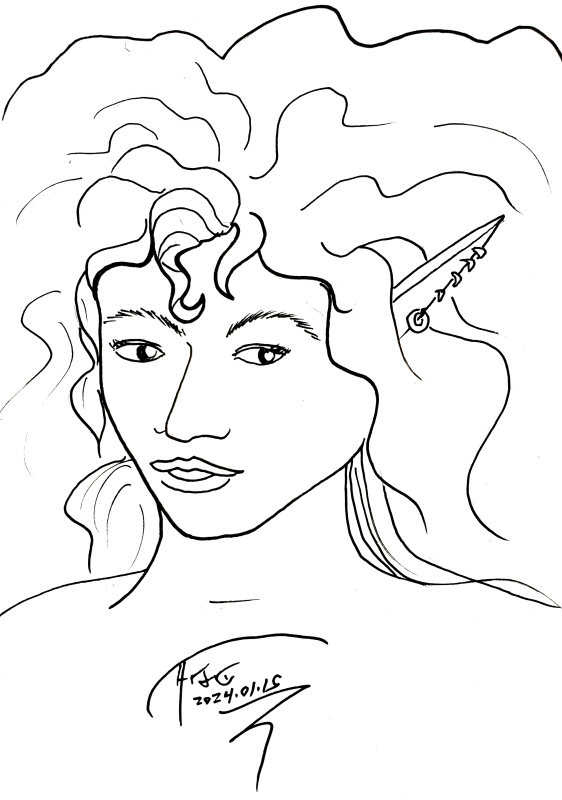
Same subject, using better pens this time. I can more or less confirm:
Onward!
-the Centaur
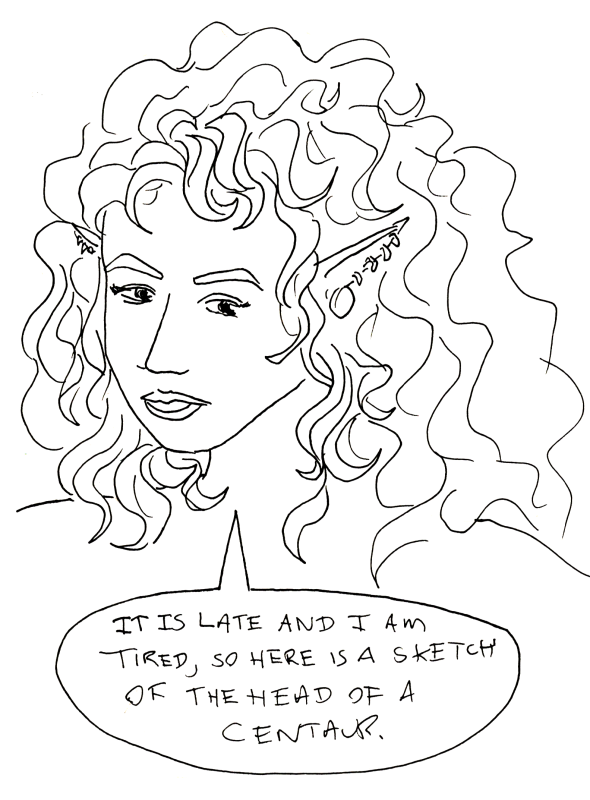
What strikes me about this sketch is how much better the pencils looked. During the inking, my pen frequently "jumped" around on the paper, causing some of the lines to end up in the wrong place (particularly the right (drawn on the left) eye and the left (drawn on the right) jaw).
Perhaps another recommendation to re-visit my arm position (or perhaps the pen; this was a Pilot V5, which is a pen I love for writing, but not as good as the Microns and other pens I normally use for drawing).
Regardless ... keep going.
-the Centaur
Pictured: Porsche the Centaur, obviously.
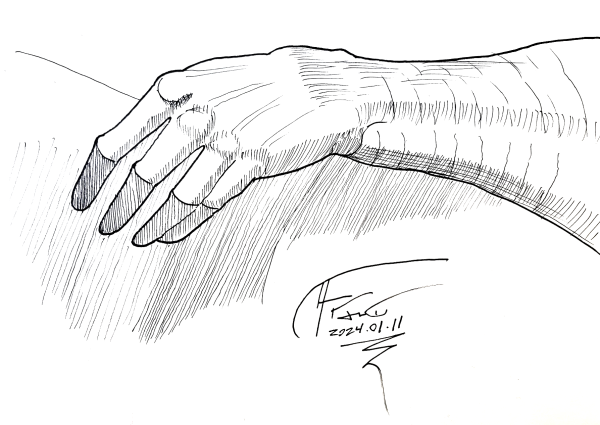
SO this is with the notebook held further away and using more arm than wrist motion. I think it worked well.
-the Centaur
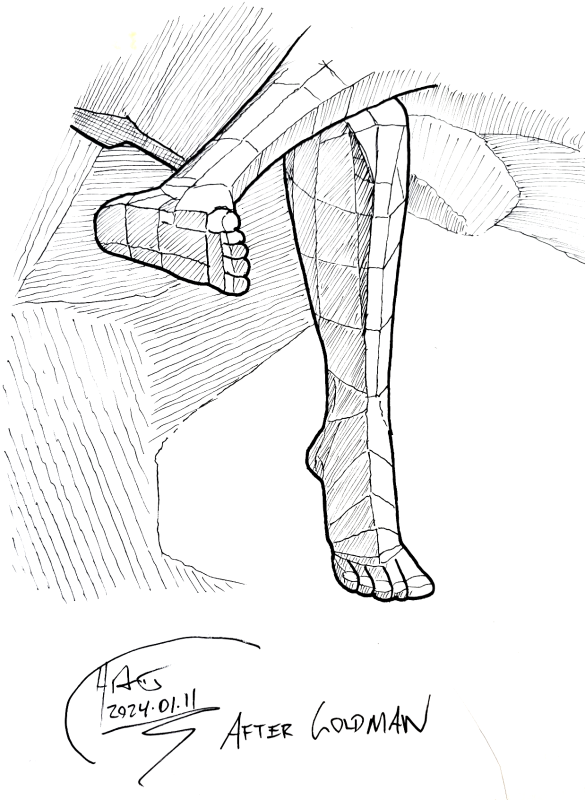
More from the Goldman book. I have a tremor in my hand which you can most readily see on the lower left; I traditionally have attributed it to the RSI that I picked up back in the late 90's during grad school (a combination of an internship with a bad ergonomic setup at work and at my apartment, during which I was also writing a proposal for the PEPE robot pet project and playing Dungeon Keeper at night; I woke up one day with a throbbing wrist and couldn't type for nine months).
But my wife pointed out I'm drawing in my wrist, not with my arm, and that can also cause wobbly lines. So I'm going to try the next drawing with a slightly further notebook position and more arm movement. Perhaps the tremors aren't something I have to accept after all. We shall see.
-the Centaur
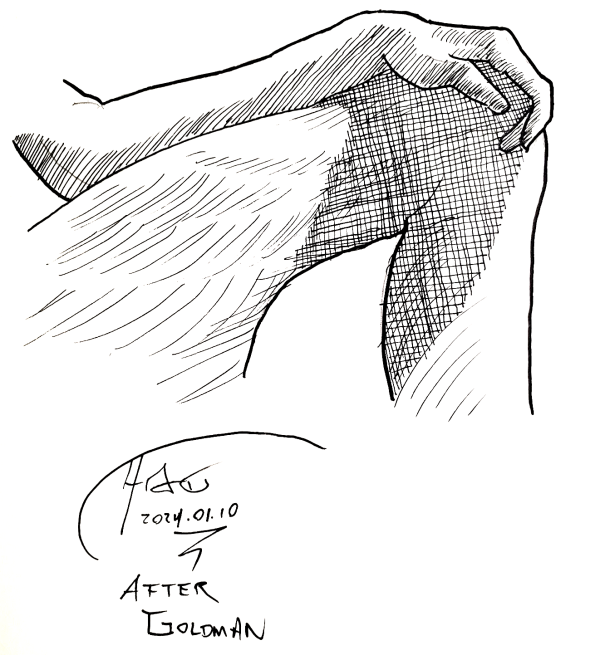
Moar Goldman studies. Now far into the book enough to start reading his section on tools, which normally I ignore as I have my own preferred methods; but this time, I felt I could see what he was saying. Who knows, maybe I'll actually try some of his pencil methods this time, and not just ink.
-the Centaur
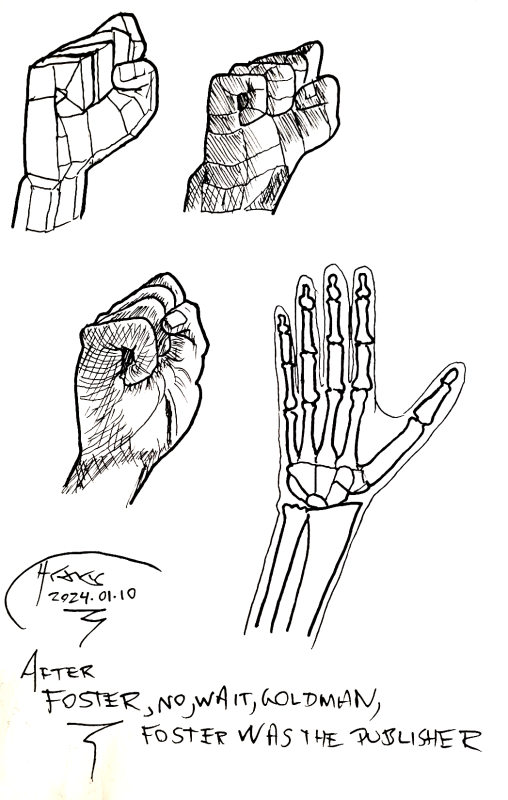
Still working through the Goldman book, which has the inspirational quote: "I hope you wear this book out from overuse!" And that's what you need when you're practicing!
-the Centaur
P.S. My wife and I were talking about learning skills, and she complained that she hadn't quite gotten what she wanted to out of a recent set of books. It occurred to me that there are two situations in which reading books about a skill doesn't help you:
Both of these are related to Vygotsky's Zone of Proximal Development - you can most easily learn things that are related to what you already know. Without a body of practice at a skill, reading up on it can sometimes turn into armchair quarterbacking and doesn't help you (and can sometimes even hurt you); with a body of practice, it turns into something closer to an athlete watching game footage to improve their own game.
So! Onward with the drawing. Hopefully some of the drawing theory will stick this time.
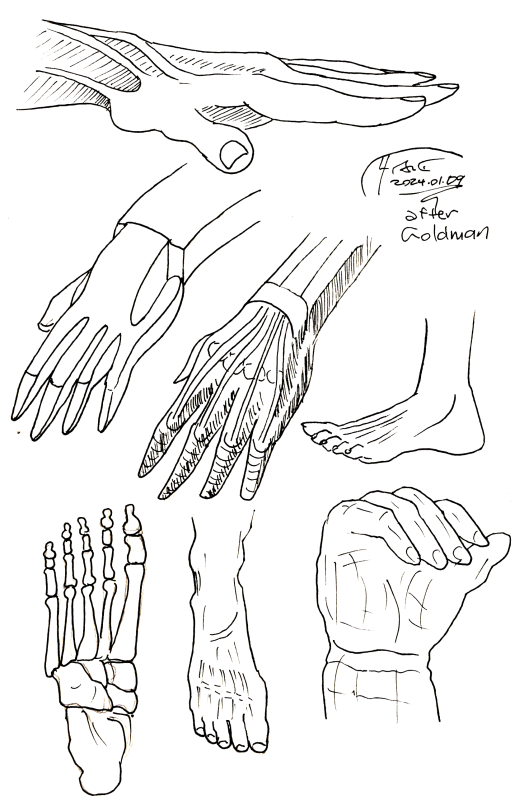
More sketches after Ken Goldman's "Drawing Hands and Feet". Generally, when I do construction lines in pencil, then ink it, then erase the lines, it usually comes out much better than when I draw freehand ink. This should not be surprising, but it is something that I need to come back to again and again, given that I am trying to squeeze a new drawing practice into an already packed day.
-the Centaur
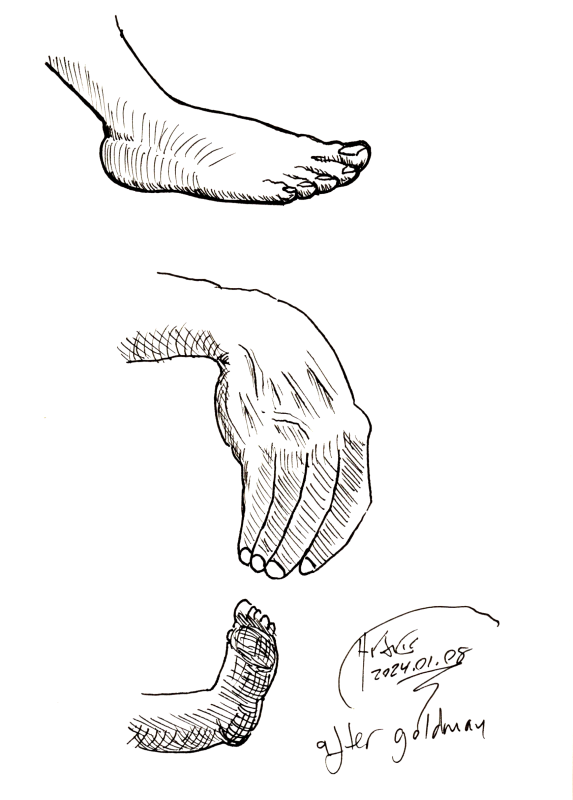
Again from the Goldman book, this time the frontispiece.
-the Centaur
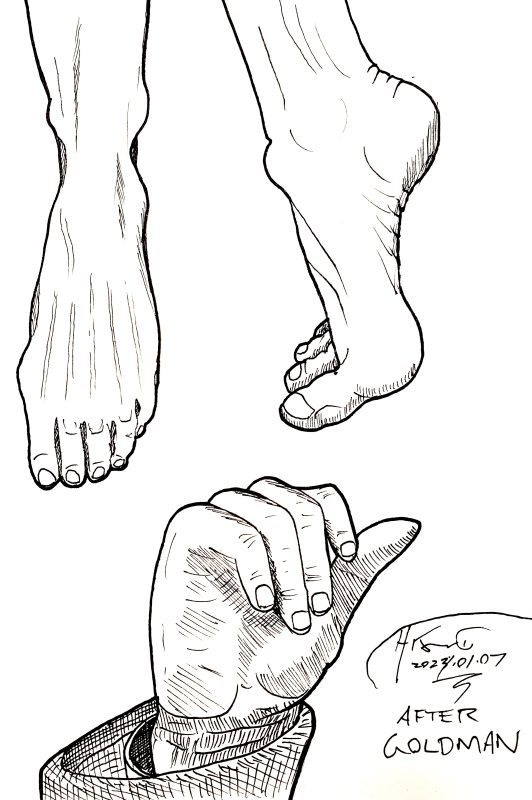
If you want to get better at drawing, you really need to treat it like any other skill, and practice ahead of your performance. We may learn by doing, but you don't get enough learning time or variety just from actually performing the task. Basketball players need to cross-train in addition to shooting hoops - not just play games. Chess masters practice with coaches. Writers scribble in their notebooks. And artists sketch.
My horse drawing book was too big to fit in my bookbag, so today's exercise is from the cover of Drawing Hands and Feet by Ken Goldman.
-the Centaur
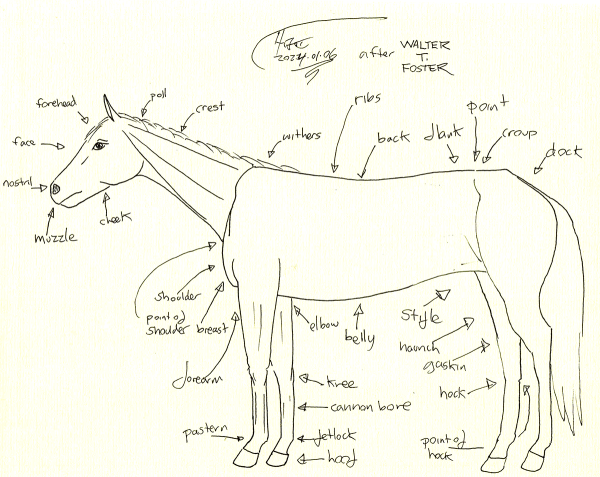
More practice from Foster's book. I was shy on time, so I didn't start with the proportions diagram, but with the parts diagram, and therefore the proportions of my parts are a bit off. But, it's a step.
-the Centaur
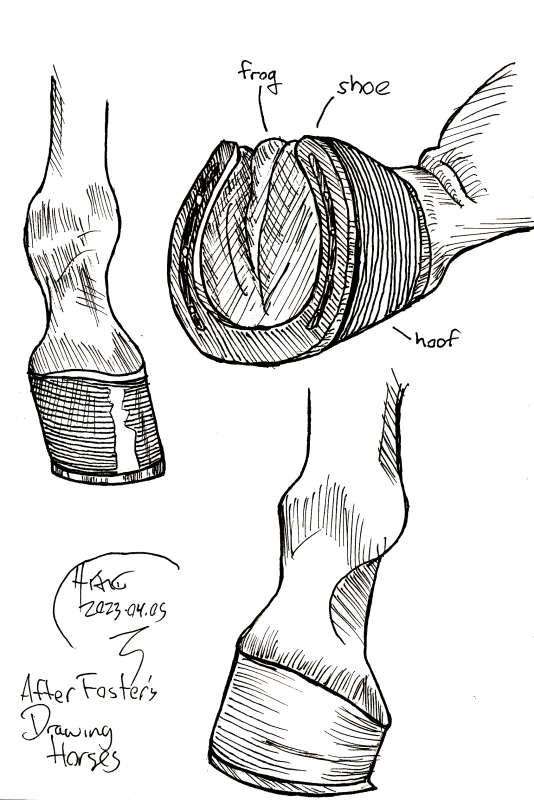
Well, logically speaking, if I want to "plan for success" in my art, and I've drawn a centauress with some hooves that I don't like, I should focus on getting better at drawing hooves. From Foster's "Drawing Horses" book, sketched in my little "One Trick Pony" sketchbook.
-the Centaur
P.S. I am totes going back and renaming the last art post "a second pony trick".
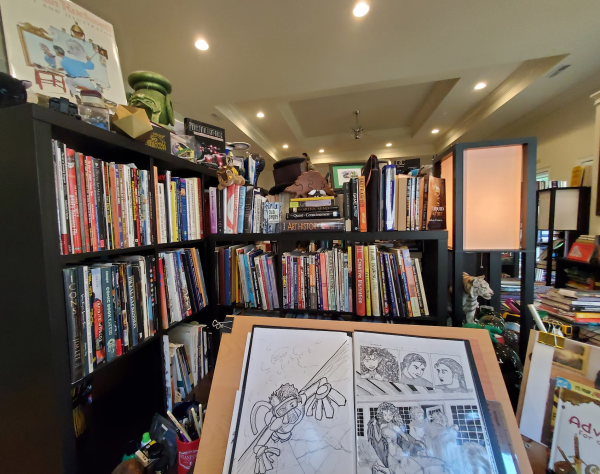
One of the productivity tools I use is a technique called "plan for success." I mostly use it for todo lists, and for that topic it's worth a blog post of its own, but, briefly, when taking on a task, I like to start off with a "plan for success" sheet where I list:
Once I have that, I start listing todo items, then categorizing them into the four Stephen Covey quadrants - Urgent and Important, Not Urgent yet Important, Urgent yet Unimportant, and Not Urgent and Not Important. Making sure that the "Not Urgent yet Important" stuff gets done is the hardest part, so I usually tranche the TODOs into "do immediately, do today, do before I leave".
But the whole "plan for success" idea came from an artist - I don't remember who - talking about the difference between professionals and amateurs. An amateur may produce great art, they said, but on accident, even if they're skilled, because they don't know how they're doing what they're doing. A professional, on the other hand, makes a plan to ensure that their art piece succeeds. They may not always succeed at it - plenty of professional artists have to start pieces over - but they don't paint themselves into a metaphorical corner as much because they've taken steps to ensure the piece comes out well - for example, by getting reference art, doing perspective or construction lines, or practice drawings.
I wonder if this idea also works for learning art? Let's find out.
-the Centaur
Pictured: My drawing desk and books on drawing.